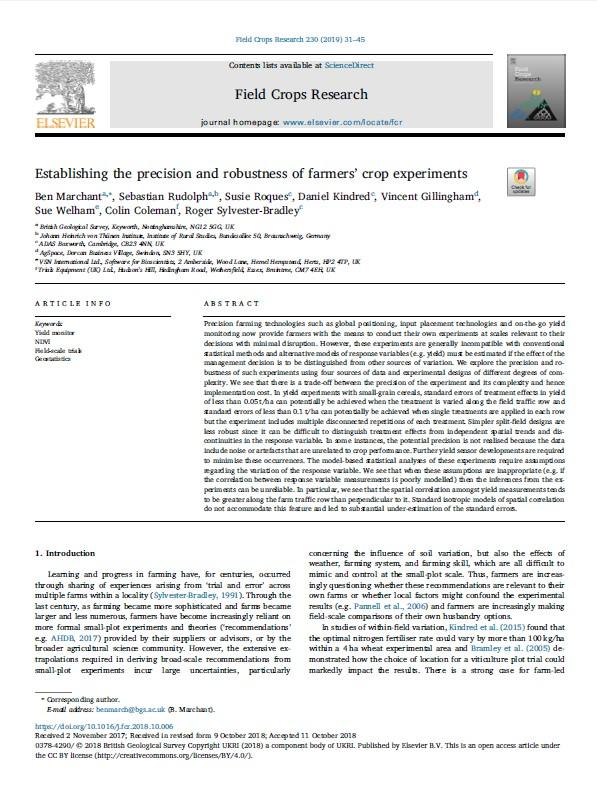Establishing the precision and robustness of farmers’ crop experiments

Paper by Ben Marchant et al in Field Crops Research 2019 describing the statistics approach developed in the Agronomics Innovate UK project 2013-2017.
Abstract:
Precision farming technologies such as global positioning, input placement technologies and on-the-go yield monitoring now provide farmers with the means to conduct their own experiments at scales relevant to their decisions with minimal disruption. However, these experiments are generally incompatible with conventional statistical methods and alternative models of response variables (e.g. yield) must be estimated if the effect of the management decision is to be distinguished from other sources of variation. We explore the precision and robustness of such experiments using four sources of data and experimental designs of different degrees of complexity.
We see that there is a trade-off between the precision of the experiment and its complexity and henceimplementation cost. In yield experiments with small-grain cereals, standard errors of treatment effects in yield of less than 0.05 t/ha can potentially be achieved when the treatment is varied along the field traffic row and standard errors of less than 0.1 t/ha can potentially be achieved when single treatments are applied in each row but the experiment includes multiple disconnected repetitions of each treatment. Simpler split-field designs are less robust since it can be difficult to distinguish treatment effects from independent spatial trends and discontinuities in the response variable. In some instances, the potential precision is not realised because the data include noise or artefacts that are unrelated to crop performance. Further yield sensor developments are required to minimise these occurrences. The model-based statistical analyses of these experiments require assumptions regarding the variation of the response variable. We see that when these assumptions are inappropriate (e.g. if the correlation between response variable measurements is poorly modelled) then the inferences from the experiments can be unreliable. In particular, we see that the spatial correlation amongst yield measurements tends to be greater along the farm traffic row than perpendicular to it. Standard isotropic models of spatial correlation do not accommodate this feature and led to substantial under-estimation of the standard errors.
Ask us for a copy of the manuscript.
